American History Timeline 1500-1700

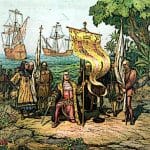
In 1492, Europeans did not know that America existed. In fact, the rest of the world had no idea that a land mass comprising of modern-day North America and Latin America existed.
Instead, he ended up on Bahamas Island. He thought he had reached Asia but soon it was realised that he had discovered a new part of the world which the rest of the world had no knowledge of.
In this way, Christopher Columbus became the first to discover the American continent. This new continent that he had discovered was called the New World.
1492 – Christopher Columbus Discovers New World
In 1492, Europeans did not know that America existed. In fact, the rest of the world had no idea that a land mass comprising of modern-day North America and Latin America existed.
Instead, he ended up on Bahamas Island. He thought he had reached Asia but soon it was realised that he had discovered a new part of the world which the rest of the world had no knowledge of.
In this way, Christopher Columbus became the first to discover the American continent. This new continent that he had discovered was called the New World.
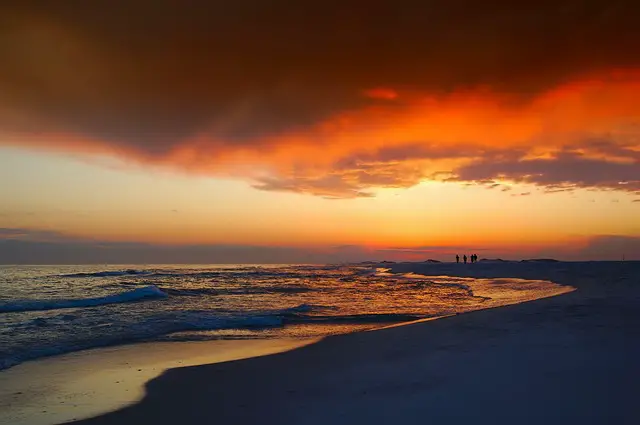
In 1513, Spanish explorer Juan Ponce De Leon landed on the coast of Florida. He and the men accompanying him then started exploring the coast.
This was the first time any European had explored the coast of North America.
Ponce De Leon claimed the territory in the name of the Spanish king. His discovery later led to the establishment of a Spanish colony in the region.
1513 – Juan Ponce De Leon Reaches Florida
In 1513, Spanish explorer Juan Ponce De Leon landed on the coast of Florida. He and the men accompanying him then started exploring the coast.
This was the first time any European had explored the coast of North America.
Ponce De Leon claimed the territory in the name of the Spanish king. His discovery later led to the establishment of a Spanish colony in the region.

In 1565, the first-ever European colony was established in North America. It was established in Saint Augustine, Florida by Pedro Menendez de Aviles.
Menendez was given legal permission by the Spanish king to establish a colony in Florida and expand Spanish power in the area.
Another purpose of the colony was to stop the French from exploring the region. Because of such an old history, Saint Augustine is the oldest city in the United States that has been continuously occupied since the 16th century.
1565 – First European Colony in North America, Saint Augustine is Established
In 1565, the first-ever European colony was established in North America. It was established in Saint Augustine, Florida by Pedro Menendez de Aviles.
Menendez was given legal permission by the Spanish king to establish a colony in Florida and expand Spanish power in the area.
Another purpose of the colony was to stop the French from exploring the region. Because of such an old history, Saint Augustine is the oldest city in the United States that has been continuously occupied since the 16th century.
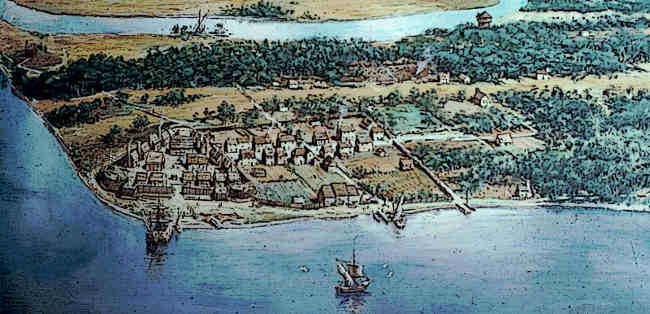
By 1607, Spain had successful colonies in America while Britain had failed to establish a colony successfully in the New World.
A joint company called Virginia Company proposed to explore the eastern coast of North America and establish a new colony there.
King James, I granted them permission and a group of 100 settlers reached the modern-day James River. This is where they established their colony called ‘Jamestown’.
Jamestown became the first successful English colony in North America. It eventually became the capital city of the much larger Virginia Colony.
1607 – First Successful English Colony in America, Jamestown, is Established
By 1607, Spain had successful colonies in America while Britain had failed to establish a colony successfully in the New World.
A joint company called Virginia Company proposed to explore the eastern coast of North America and establish a new colony there.
King James, I granted them permission and a group of 100 settlers reached the modern-day James River. This is where they established their colony called ‘Jamestown’.
Jamestown became the first successful English colony in North America. It eventually became the capital city of the much larger Virginia Colony.

In 1613, Dutch established a trading post on Manhattan Island. The purpose of this trading post was to help Dutch traders hunt beavers in the area.
At the time, beaver pelts were very expensive back in Europe, so the Dutch thought that they could hunt a large number of beavers and sell the pelts in Europe.
The trading post soon became a part of a proper colony established by the Dutch which was called New Amsterdam.
1613 – Dutch Establish Trading Post, Eventually becoming New Amsterdam Colony
In 1613, Dutch established a trading post on Manhattan Island. The purpose of this trading post was to help Dutch traders hunt beavers in the area.
At the time, beaver pelts were very expensive back in Europe, so the Dutch thought that they could hunt a large number of beavers and sell the pelts in Europe.
The trading post soon became a part of a proper colony established by the Dutch which was called New Amsterdam.
The English colony at Jamestown, established in 1607, had become a thriving trading colony by 1619 and was now called the Virginia Colony.
More settlers came to live in the colony, not only from Britain but from other parts of Europe as well.
A governor appointed by the British Crown had the highest authority in the Virginia colony. But in 1619, a sort of parliament was established in Virginia Colony.
This was called the House of Burgesses and was the first ever parliament in North America, created in the European style. The men in this parliament were chosen by the inhabitants of the Virginia colony.In the beginning, the House of Burgesses had few powers but later its power grew. That was because colonists wanted their own representatives to make laws rather than letting Britain impose laws from across the ocean.
1619 – The First American Assembly – House of Burgesses is Created
The English colony at Jamestown, established in 1607, had become a thriving trading colony by 1619 and was now called the Virginia Colony.
More settlers came to live in the colony, not only from Britain but from other parts of Europe as well.
A governor appointed by the British Crown had the highest authority in the Virginia colony. But in 1619, a sort of parliament was established in Virginia Colony.
This was called the House of Burgesses and was the first ever parliament in North America, created in the European style. The men in this parliament were chosen by the inhabitants of the Virginia colony.In the beginning, the House of Burgesses had few powers but later its power grew. That was because colonists wanted their own representatives to make laws rather than letting Britain impose laws from across the ocean.
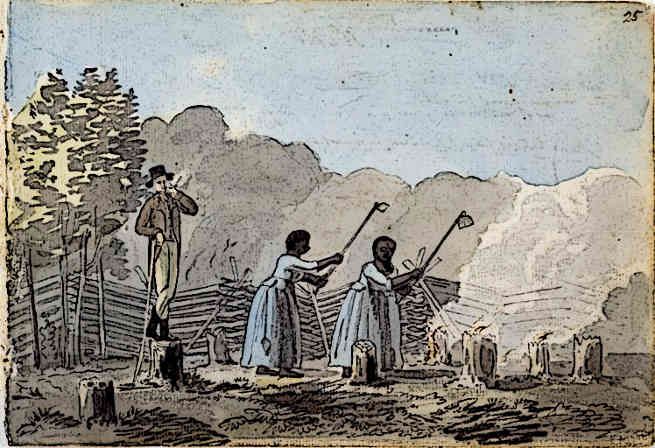
In 1619, the first African slaves were brought to America. These slaves were taken by English privateers from a Spanish ship and then brought to the English colony of Virginia.
Initially, they were treated as indentured servants.Indentured servants were simply bound to work for their employee for a fixed number of years.
But slowly, this system evolved into slavery and any child born to a slave was also considered a slave, and a property of the master.1619 – The First African Slaves are Brought to America
In 1619, the first African slaves were brought to America. These slaves were taken by English privateers from a Spanish ship and then brought to the English colony of Virginia.
Initially, they were treated as indentured servants.Indentured servants were simply bound to work for their employee for a fixed number of years.
But slowly, this system evolved into slavery and any child born to a slave was also considered a slave, and a property of the master.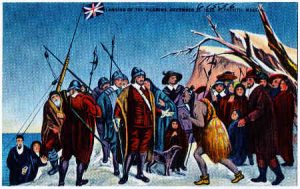
A group of people in Britain faced persecution due to their different religious beliefs. This group eventually decided to come to America and establish their own company.
The group comprised 102 people who sailed on the ship ‘Mayflower’ and reached Plymouth in November 1620.
Before the pilgrims went off in their ships to build fortifications and houses, they agreed to the Mayflower Compact.
According to this Compact, all the Pilgrims decided that they would cooperate with each other so that they could establish their colony peacefully.
The Mayflower Compact is often called the first written constitution of the world. The colony founded by the Pilgrims was named the Plymouth Colony.
1620 – Plymouth Pilgrims Establish Colony, Sign Mayflower Compact
A group of people in Britain faced persecution due to their different religious beliefs. This group eventually decided to come to America and establish their own company.
The group comprised 102 people who sailed on the ship ‘Mayflower’ and reached Plymouth in November 1620.
Before the pilgrims went off in their ships to build fortifications and houses, they agreed to the Mayflower Compact.
According to this Compact, all the Pilgrims decided that they would cooperate with each other so that they could establish their colony peacefully.
The Mayflower Compact is often called the first written constitution of the world. The colony founded by the Pilgrims was named the Plymouth Colony.
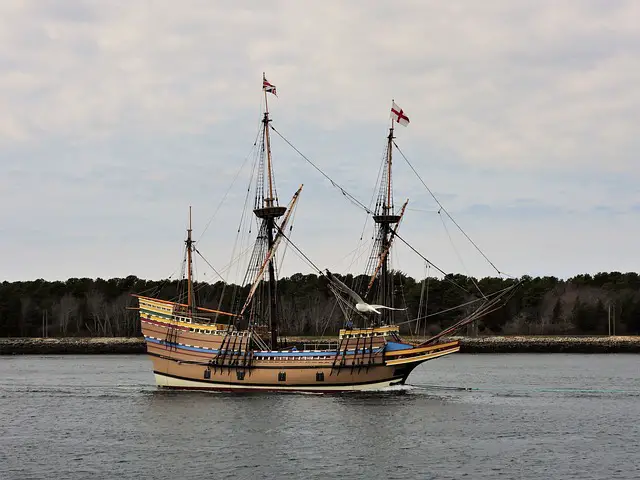
In 1624, the Dutch West India Company established a colony called New Amsterdam.
The location of this colony was the site of present-day New York City.
The Dutch were able to purchase the land from the local native Indian tribe of Manhattan for the tiny sum of $24.
1624 – New Amsterdam Colony Founded by the Dutch
In 1624, the Dutch West India Company established a colony called New Amsterdam.
The location of this colony was the site of present-day New York City.
The Dutch were able to purchase the land from the local native Indian tribe of Manhattan for the tiny sum of $24.

After the arrival of the Pilgrims, more people with Puritan religious beliefs left Britain to come to America. One such group established the Massachusetts Bay Colony in 1628.
Most of the population of this colony was comprised of Puritans and it was also governed by Puritan leaders. Although the colony was initially small, it attracted more Puritans from Britain.
By 1630, the size of the colony had increased significantly so its total population reached more than 20,000.
1628 – Massachusetts Bay Colony Founded
After the arrival of the Pilgrims, more people with Puritan religious beliefs left Britain to come to America. One such group established the Massachusetts Bay Colony in 1628.
Most of the population of this colony was comprised of Puritans and it was also governed by Puritan leaders. Although the colony was initially small, it attracted more Puritans from Britain.
By 1630, the size of the colony had increased significantly so its total population reached more than 20,000.

In 1630, Puritan settlers from Charlestown moved to the area called Trimountaine. They renamed the place ‘Boston’ and established a new settlement here.
Boston became the capital city of the Massachusetts Bay Colony. And in the following decades, some of the most important events of the America Revolution took place in Boston.
One reason why Boston became such an important city was that its port became one of the most important trade ports of the British colonies in North America.
As a result, Boston had a large portion of educated and wealthy people when the American Revolution began.
1630 – Boston was Founded by Puritan Settlers
In 1630, Puritan settlers from Charlestown moved to the area called Trimountaine. They renamed the place ‘Boston’ and established a new settlement here.
Boston became the capital city of the Massachusetts Bay Colony. And in the following decades, some of the most important events of the America Revolution took place in Boston.
One reason why Boston became such an important city was that its port became one of the most important trade ports of the British colonies in North America.
As a result, Boston had a large portion of educated and wealthy people when the American Revolution began.
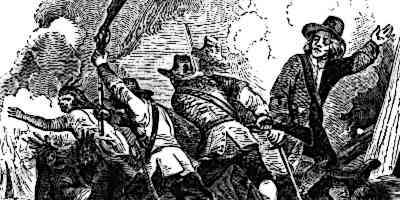
Before 1634, British colonies wanted to reach the interior in order to increase their fur trade.
They thought that if they could reach the interior, they could hunt more, gather more furs and their trade would increase.
On the other hand, the native Indian tribe of Pequot was also trying to expand its control at the same time.
As a result, both sides clashed. The English colonies of Plymouth, Massachusetts Bay, and Saybrook joined their forces in order to fight the Pequot.
1634 – The Pequot War Began
Before 1634, British colonies wanted to reach the interior in order to increase their fur trade.
They thought that if they could reach the interior, they could hunt more, gather more furs and their trade would increase.
On the other hand, the native Indian tribe of Pequot was also trying to expand its control at the same time.
As a result, both sides clashed. The English colonies of Plymouth, Massachusetts Bay, and Saybrook joined their forces in order to fight the Pequot.

In 1636, a group of 100 Puritans from the Massachusetts Bay Colony arrived at Hartford. Here they established a new colony which was named the Connecticut Colony.
The name ‘Connecticut’ was taken from the native Indian language and it means a river driven by winds.
Thomas Hooker was one of the most prominent colonists who founded the colony.
1636 – Connecticut Colony is Established
In 1636, a group of 100 Puritans from the Massachusetts Bay Colony arrived at Hartford. Here they established a new colony which was named the Connecticut Colony.
The name ‘Connecticut’ was taken from the native Indian language and it means a river driven by winds.
Thomas Hooker was one of the most prominent colonists who founded the colony.
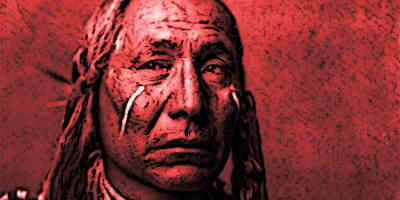
During the Pequot War, a small force of English soldiers surrounded the Pequot villages at Mistick. The Pequots had fortified their villages, so it was very hard for English soldiers to enter them.
Some of the soldiers managed to enter them and tried to take control of the villages. But they had to face a lot of resistance from the Pequot warriors and it became difficult for them to escape.
So they lit up fires to distract the Pequot warriors and then escaped from the village. However, the fire became unmanageable for the villagers.
Most of the Pequot died due to the fire.
Some escaped but since the village was surrounded by the English soldiers, they were killed. This tragic event became known as the Mystic Massacre.
1637 – The Mystic Massacre
During the Pequot War, a small force of English soldiers surrounded the Pequot villages at Mistick. The Pequots had fortified their villages, so it was very hard for English soldiers to enter them.
Some of the soldiers managed to enter them and tried to take control of the villages. But they had to face a lot of resistance from the Pequot warriors and it became difficult for them to escape.
So they lit up fires to distract the Pequot warriors and then escaped from the village. However, the fire became unmanageable for the villagers.
Most of the Pequot died due to the fire.
Some escaped but since the village was surrounded by the English soldiers, they were killed. This tragic event became known as the Mystic Massacre.

By 1638, Pequot had suffered a lot of damage from their war with the English colonies. After incidents like the Mystic Massacre, nearly 700 Pequots died by 1638 or were taken as prisoners.
In 1638, very few Pequots remained alive and the Pequot War came to an end.
The surviving Pequots were either sent as slaves to West Indies or forced to leave their native homes and live with other native Indian tribes.
As a result, the Pequot tribe simply ceased to exist by 1638.
1638 – Pequot War Ended, English Victory
By 1638, Pequot had suffered a lot of damage from their war with the English colonies. After incidents like the Mystic Massacre, nearly 700 Pequots died by 1638 or were taken as prisoners.
In 1638, very few Pequots remained alive and the Pequot War came to an end.
The surviving Pequots were either sent as slaves to West Indies or forced to leave their native homes and live with other native Indian tribes.
As a result, the Pequot tribe simply ceased to exist by 1638.

In 1638, a new group of Puritans arrived from London. This group proceeded to establish a new English colony at New Haven. Initially, 7 men were left at the site of the colony to make
preparations.
In April 1638, a group of 250 people arrived and finally founded the colony. The two notable people who founded the colony included John Davenport and Theophilus Eaton.
1638 – New Haven Colony Founded
In 1638, a new group of Puritans arrived from London. This group proceeded to establish a new English colony at New Haven. Initially, 7 men were left at the site of the colony to make
preparations.
In April 1638, a group of 250 people arrived and finally founded the colony. The two notable people who founded the colony included John Davenport and Theophilus Eaton.

In 1664, the Dutch and the British were enemies back in Europe. This was because both had powerful navies and both wanted to establish colonies in other parts of the world. So they often came into conflict with each other.
As a result, the British colonists in America also often came into conflict with the Dutch colonists in America. In 1664, an English naval squadron decided to attack the New Amsterdam colony of the Dutch.
Colonel Richard Nicolis was the leader of the English squadron. The governor of New Amsterdam tried to resist the English but the population of the city did not side with him because they didn’t like him.
1664 – British Forces Capture New Amsterdam, Rename it New York
In 1664, the Dutch and the British were enemies back in Europe. This was because both had powerful navies and both wanted to establish colonies in other parts of the world. So they often came into conflict with each other.
As a result, the British colonists in America also often came into conflict with the Dutch colonists in America. In 1664, an English naval squadron decided to attack the New Amsterdam colony of the Dutch.
Colonel Richard Nicolis was the leader of the English squadron. The governor of New Amsterdam tried to resist the English but the population of the city did not side with him because they didn’t like him.
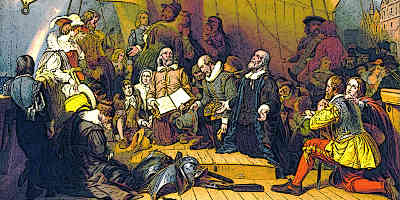
A rebellion by settlers took place in the colony of Virginia in 1676. The rebellion was led by settlers who lived on the frontier of the colony.
These settlers had to face many dangers, being away from the main cities and towns of the colony. And yet, they weren’t given much importance by the Governor of the colony, William Berkeley.
This made the settlers angry and they reacted by reaching the capital of the colony, Jamestown, and burning it. They also attacked many Native Americans.
But British merchant ships and reinforcements from London were successful in suppressing the rebellion and it ended the same year. The rebellion is called Bacon’s Rebellion because it was led by Nathaniel Bacon.
1676 – Bacon’s Rebellion takes place in Virginia
A rebellion by settlers took place in the colony of Virginia in 1676. The rebellion was led by settlers who lived on the frontier of the colony.
These settlers had to face many dangers, being away from the main cities and towns of the colony. And yet, they weren’t given much importance by the Governor of the colony, William Berkeley.
This made the settlers angry and they reacted by reaching the capital of the colony, Jamestown, and burning it. They also attacked many Native Americans.
But British merchant ships and reinforcements from London were successful in suppressing the rebellion and it ended the same year. The rebellion is called Bacon’s Rebellion because it was led by Nathaniel Bacon.
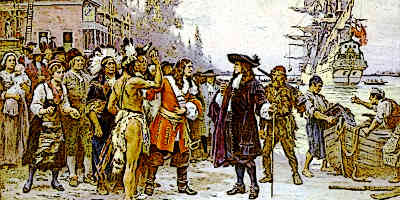
In 1681, the Province of Pennsylvania was established by William Penn. It was also called the Pennsylvania Colony.
The name of the colony combined the words ‘Penn’ and ‘Sylvania’.
Penn was simply the surname of William Penn who founded the colony. And ‘Sylvania’ means ‘forest land’ in Latin.
So the colony’s name meant ‘Penn’s Woods’. Pennsylvania became one of the original 13 colonies that united against British rule in the American Revolution.
1681 – Province of Pennsylvania Established
In 1681, the Province of Pennsylvania was established by William Penn. It was also called the Pennsylvania Colony.
The name of the colony combined the words ‘Penn’ and ‘Sylvania’.
Penn was simply the surname of William Penn who founded the colony. And ‘Sylvania’ means ‘forest land’ in Latin.
So the colony’s name meant ‘Penn’s Woods’. Pennsylvania became one of the original 13 colonies that united against British rule in the American Revolution.
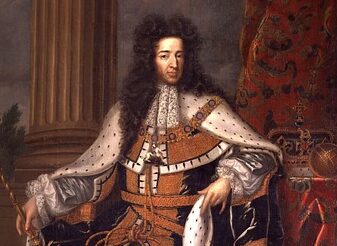
In 1689, England and France were at war in Europe. In North America as well, English and French colonists launched their own war.
Both sides wanted to take over more land and reduce the influence of the other side. And so, they used their Native American allies to launch attacks on each other’s cities and towns.
The war continued until 1697 but both sides didn’t gain any significant benefit from it.
1689 – King William’s War
In 1689, England and France were at war in Europe. In North America as well, English and French colonists launched their own war.
Both sides wanted to take over more land and reduce the influence of the other side. And so, they used their Native American allies to launch attacks on each other’s cities and towns.
The war continued until 1697 but both sides didn’t gain any significant benefit from it.
In 1696, King William’s War came to an end when England and France signed the Treaty of Rijswijk.
According to this treaty, both sides went back to their original borders before the war.
1697 – Treaty of Rijswijk
In 1696, King William’s War came to an end when England and France signed the Treaty of Rijswijk.
According to this treaty, both sides went back to their original borders before the war.